The World's Leader in Neuromuscular Dentistry Since 1979
Don't wanna be here? Send us removal request.
Text
Ethical Considerations in Treating TMJ/TMD: Guidance for Junior Doctors
As a junior doctor, navigating the complex world of temporomandibular joint disorders (TMJ/TMD) can be challenging. Beyond the clinical aspects, there are numerous ethical considerations that come into play when treating these conditions.
This blog aims to shed light on the ethical dilemmas you may face and provide guidance on how to approach them responsibly.
The Diagnostic Dilemma
Accurate diagnosis is the cornerstone of ethical treatment. The symptoms of TMJ TMD can be wide-ranging and sometimes overlap with other conditions. As a junior doctor, you might feel pressured to provide a definitive diagnosis quickly, but it's crucial to consider the following:
The danger of premature labeling: Hastily diagnosing TMJ/TMD without thorough investigation can lead to unnecessary treatments and patient anxiety.
Overreliance on technology: While imaging can be helpful, remember that TMJ diagnosis should not be based solely on radiographic findings.
The role of clinical judgment: Trust your training, but also know when to seek a second opinion from more experienced colleagues.
Ethical Use of Diagnostic Tools
When considering diagnostic tests, ask yourself:
Is this test truly necessary for TMJ diagnosis?
Will the results significantly impact the treatment plan?
Are there less invasive alternatives?
Balancing Patient Expectations and Clinical Reality
Patients often come with preconceived notions about their condition. Your ethical duty includes:
Managing expectations: Be honest about the limitations of current treatments and the chronic nature of some TMJ/TMD cases.
Addressing "Dr. Google": Tactfully handle misinformation patients may have encountered online about the causes of TMJ TMD.
Avoiding false hope: Resist the temptation to promise quick fixes or miracle cures.
The Treatment Tightrope
Choosing the right treatment approach involves several ethical considerations:
Start conservatively: Begin with reversible, non-invasive treatments before considering more aggressive options.
Informed decision-making: Ensure patients understand all available options, including the option of no treatment.
Respecting patient autonomy: While you can advise, ultimately the patient must make the final decision about their treatment.
The Opioid Predicament
Pain management in TMJ/TMD can be challenging, especially given the current opioid crisis:
Judicious prescribing: Consider non-opioid alternatives first and prescribe opioids only when absolutely necessary.
Monitoring for abuse: Be vigilant for signs of dependency or misuse.
Education is key: Inform patients about the risks and proper use of pain medications.
Ethical Considerations in Referrals
Knowing when to refer a patient is an important skill:
Recognizing limitations: Be honest about the boundaries of your expertise.
Choosing the right specialist: Consider not just clinical skills but also ethical reputation when referring patients.
Continuity of care: Ensure a smooth handover of patient information to maintain trust and quality of care.
The Placebo Dilemma
Some TMJ/TMD treatments may have a significant placebo effect. This raises ethical questions:
Is it ethical to recommend a treatment that may work primarily through placebo effects?
How do you balance honesty with the potential therapeutic benefit of positive expectations?
Can the power of placebo be harnessed ethically in TMJ/TMD treatment?
Research and Innovation: Treading Carefully
As a junior doctor, you may be involved in or exposed to new research in TMJ/TMD treatment:
Critical evaluation: Don't be swayed by hype; critically assess new treatments before recommending them.
Ethical participation: If involved in research, ensure it adheres to ethical guidelines and prioritizes patient welfare.
Disclosure: Be transparent about any conflicts of interest related to new treatments or devices.
The Psychosocial Aspect
TMJ/TMD can significantly impact a patient's quality of life. Ethical care involves:
Holistic assessment: Consider the psychological and social impacts of the condition.
Appropriate referrals: Know when to involve mental health professionals in patient care.
Empathetic communication: Validate the patient's experience while maintaining professional boundaries.
Conclusion
Navigating the ethical landscape of TMJ/TMD treatment as a junior doctor requires a delicate balance of clinical knowledge, ethical awareness, and empathy. By carefully considering the symptoms of TMJ TMD, understanding the various causes of TMJ TMD, and approaching TMJ diagnosis with both rigor and sensitivity, you can provide ethical, patient-centered care.
Remember, ethical practice is an ongoing journey. Stay curious, remain open to learning from both successes and mistakes, and always prioritize the patient's best interests. By doing so, you'll not only provide better care for your TMJ/TMD patients but also grow into a more thoughtful and compassionate physician.
0 notes
Text
Five Latest TMJ TMD Treatment Options
Regenerative Therapy
In recent times one of the most talked about and exciting developments in TMJ TMD treatment is the emergence of regenerative therapy which helps in repairing and regenerating damaged tissues within the temporomandibular joint.
This latest treatment involves the use of stem cells, growth factors, and other biological materials to promote healing and restore the function of the TMJ over time.

Minimally Invasive Procedures
The profound achievements in minimally invasive techniques have revolutionized the TMJ TMD treatment options in recent years with procedures like radiofrequency ablation and arthroscopic surgery, which offers a less invasive alternative to traditional open surgical procedures. Minimally invasive surgeries reduce the recovery time which helps in minimizing the post-operative complications associated with open surgical procedures for alleviating the causes of TMD.
Neuromuscular Dentistry
This is an innovative approach that focuses on realigning the affected jaw and teeth to achieve optimal muscle functions so that it can reduce the strain on TMJ.
Neuromuscular dentistry often involves the use of specialized dental appliances, like bite guards and orthotic splints to optimize the position of the jaws and thereby alleviate the pain for patients suffering from this ailment.
Botulinum Toxin Injections
As a TMD treatment option, the use of botulinum toxin (Botox) injections has also gained popularity in recent times.
By injecting small amounts of Botox into specific muscles surrounding the jaw, this treatment can help reduce and relax muscle tension, relieving the chronic pain and discomfort associated with TMD.
Advancements in technology have paved the way for innovative TMD treatment options, such as virtual reality (VR) and biofeedback therapy. VR can be used to create immersive environments that distract and relax patients, while biofeedback techniques help individuals better understand and control their jaw muscle activity, promoting relaxation and reducing clenching or grinding habits.
Virtual Reality and Biofeedback Therapy
Growth in technology has also paved the way for newfound TMD treatment options like Virtual Reality (VR) and biofeedback therapy.
Using VR medical practitioners can nowadays create immersive environments that are capable of distracting and relaxing the patients, while biofeedback techniques help individuals to better understand and control the muscles in their jaws, promoting relaxation and reduced grinding or clenching of their teeth.
0 notes
Text
Innovative Pain Management Techniques for TMD: What Junior Doctors Need to Know
Explore the forefront of Temporomandibular Joint Disorder (TMD) management with our comprehensive guide tailored for junior doctors. This blog delves into advanced pain relief strategies that are reshaping TMD treatment paradigms. From novel therapeutic approaches to emerging technologies, discover how these innovations offer new hope for patients suffering from TMD-related discomfort.

Our detailed insights cover essential topics such as the role of non-invasive therapies, pharmacological advancements, and integrative treatment modalities. Learn practical tips on assessing TMD symptoms, diagnosing underlying causes, and implementing personalized care plans that prioritize patient well-being.
Whether you're new to managing TMD or seeking to expand your knowledge base, this blog equips you with the latest evidence-based practices and clinical strategies. Stay informed, enhance your clinical skills, and empower your patients with effective solutions for managing TMD pain.
0 notes
Text
Innovative Pain Management Techniques for TMD: What Junior Doctors Need to Know
Explore the forefront of Temporomandibular Joint Disorder (TMD) management with our comprehensive guide tailored for junior doctors. This blog delves into advanced pain relief strategies that are reshaping TMD treatment paradigms. From novel therapeutic approaches to emerging technologies, discover how these innovations offer new hope for patients suffering from TMD-related discomfort.

Our detailed insights cover essential topics such as the role of non-invasive therapies, pharmacological advancements, and integrative treatment modalities. Learn practical tips on assessing TMD symptoms, diagnosing underlying causes, and implementing personalized care plans that prioritize patient well-being.
Whether you're new to managing TMD or seeking to expand your knowledge base, this blog equips you with the latest evidence-based practices and clinical strategies. Stay informed, enhance your clinical skills, and empower your patients with effective solutions for managing TMD pain.
0 notes
Text
Join the ranks of the world's finest clinicians in neuromuscular dentistry. At ICCMO, we're more than a community; we're a global family dedicated to evidence-based TMD treatment.
Share your knowledge, grow your practice, and be part of a network that's shaping the future of dental care.
visit www.iccmo.org/become-a-member to become an ICCMO Member today and let's thrive together!
0 notes
Text
Common Causes of Jaw Pain
In most cases, temporomandibular joint disorder causes jaw pain. But apart from that, you may experience pain due to other reasons, including teeth grinding, gum disease, mumps, infections, arthritis, and trauma.

For example, arthritis affects the joints significantly. You may experience inflammation in your temporomandibular joint that causes jaw pain. There are many people who grind their teeth during emotional stress. This condition is also known as bruxism.
There are other symptoms that you may experience later, including sensitive teeth, jaw locking, pain in the face, a burning sensation in the mouth, popping or grinding sounds, and difficulty chewing or opening the mouth. It would be best to consult with an expert to get rid of such a painful condition. The specialist may recommend a blood test and an imaging study to analyze the causes of TMD.
0 notes
Text
TMJ vs Normal Jaw: What Are The Differences?
Generally, the skull and jawbone are joined by the temporomandibular joint that serves as a hinge. That’s why we are able to take necessary actions including speaking, chewing, and yawning due to this particular structure.

But when we suffer from TMJ TMD disorders, we experience a wide range of conditions that affect the proper functioning of the muscles and jaw joint surrounding it. The disorder may happen due to various reasons including teeth grinding or bruxism, injury, and arthritis. Patients with this type of disorder may notice several symptoms including headaches, jaw pain, clicking or popping noises, and difficulty opening or closing the mouth.
If you want to treat this problem, contact an experienced dentist for an accurate diagnosis and the best care.
0 notes
Text
Welcome to ICCMO the International College of Craniomandibular Orthopedics

Join the world's leading occlusion experts to gain new insights and information to help your patients.
#neuromuscular dentistry courses#neuromuscular dentistry#neuromuscular dentist#neuromuscular dentists
0 notes
Text

This image is related to what TMJ and TMD is. ICCMO is your online resource for information on the causes, diagnosis, and treatment of temporomandibular joint disorders often referred to as TMJ or TMD.
0 notes
Text
5 Signs You Might Have TMJ/TMD Disorder
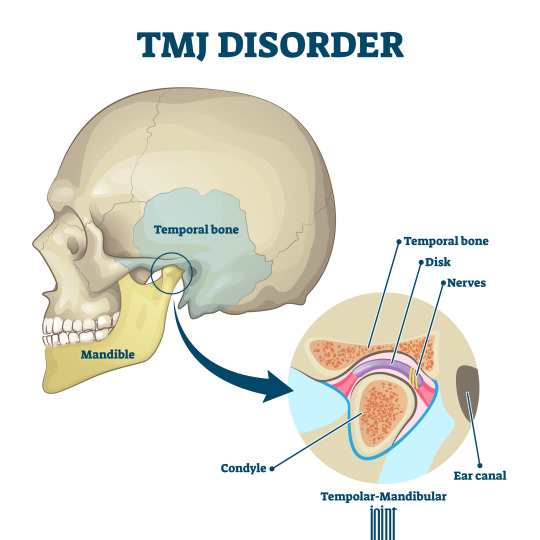
Persistent Jaw Pain: One of the primary indicators of TMJ/TMD disorder is persistent jaw pain. This pain can manifest as a dull ache or a sharp, stabbing sensation in the jaw joint area. It may worsen when chewing, speaking, or yawning. Sometimes, the pain can even radiate to other parts of the face, neck, or shoulders. If you notice recurring discomfort in your jaw, it's essential to consult a healthcare professional for an evaluation.
Difficulty Chewing: Have you noticed difficulty or discomfort while chewing? Problems with the temporomandibular joint can lead to challenges with jaw movement, making it uncomfortable or painful to eat certain foods. You might experience a clicking or popping sensation when opening or closing your mouth, which can further hinder your ability to chew properly. Difficulty chewing can also contribute to other issues like headaches or nutritional deficiencies if left untreated.
Frequent Headaches: Chronic headaches, especially those originating from the temples or around the ears, can be linked to TMJ/TMD disorder. The dysfunction of the jaw joint can trigger tension headaches or migraines due to the strain placed on surrounding muscles and nerves. If you find yourself experiencing regular headaches alongside other symptoms like jaw pain or clicking sounds, it's crucial to investigate the possibility of TMJ/TMD involvement.
Ear Pain or Ringing: Surprisingly, issues with the temporomandibular joint can affect the ears as well. Many individuals with TMJ/TMD disorder report experiencing ear pain, pressure, or ringing in the ears (tinnitus). This occurs because the jaw joint is located close to the ear canal, and any inflammation or dysfunction in this area can impact the surrounding structures.
Facial Muscle Tension: TMJ/TMD disorder can lead to increased tension in the facial muscles, causing them to feel tight, sore, or fatigued. You might notice difficulty relaxing your jaw or facial muscles, even when you're not actively using them. This chronic muscle tension can exacerbate other symptoms like jaw pain and headaches, creating a cycle of discomfort. Gentle massage, heat therapy, and relaxation techniques may provide temporary relief, but addressing the underlying TMJ/TMD issue is essential for long-term improvement.
0 notes
Text
How to Manage TMJ/TMD?
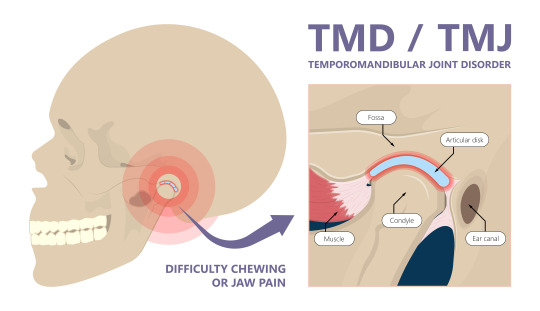
Besides the treatment options mentioned earlier, there are a few other methods that can be considered for managing TMJ/TMD:
Stress management techniques: Since stress and anxiety can intensify TMJ/TMD symptoms, practicing stress management techniques in your daily routine can be beneficial. This may include practices such as meditation, deep breathing exercises, yoga, or seeking professional help from a therapist.
Heat and cold therapy: Applying a warm compress or using an ice pack on the affected area can help reduce pain and inflammation associated with TMJ/TMD. Alternating between heat and cold therapy can provide relief and promote healing.
Botox injections: In some cases, Botox injections may be recommended to relax the muscles around the jaw joint. This can help relax muscle tension and reduce TMJ/TMD symptoms.
Surgery: In severe cases where conservative treatments have not provided sufficient relief, surgical intervention may be considered. Surgical options for TMJ/TMD include arthrocentesis (flushing out the joint), arthroscopy (using a small camera to visualize and treat the joint), or open-joint surgery (reconstructing or replacing the joint).
0 notes
Text
What is TMJ/TMD? Its Causes, Symptoms, and Treatment
Temporomandibular Joint Disorder (TMJ/TMD) is a common condition that affects the jaw joint and surrounding muscles. It can cause a range of uncomfortable symptoms, impacting people's quality of life.
What is TMJ/TMD?
The temporomandibular joint (TMJ) connects the jawbone to the skull, allowing for smooth jaw movement during activities such as chewing, speaking, and yawning. TMJ disorder (TMD) refers to a variety of conditions that affect the TMJ and the muscles surrounding it.
Symptoms of TMJ/TMD
youtube
TMJ/TMD can manifest in a variety of ways, and the severity of symptoms can vary from person to person. Some common symptoms include:
Jaw pain or tenderness: This is one of the most prevalent symptoms of TMJ/TMD. The pain may be localized to the jaw joint or expand to the surrounding areas, such as the ears, temples, or neck.
Clicking or popping sounds: People with TMJ/TMD may experience clicking, popping, or irritating sounds when opening or closing their mouths. This is often accompanied by a sensation of the jaw getting tight or locked in position.
Difficulty in jaw movement: TMJ/TMD can cause limited jaw movement, making it challenging to open the mouth fully or move it from side to side.
Headaches and facial pain: Chronic headaches, migraines, and facial pain are common symptoms associated with TMJ/TMD. The pain may be felt in the temples, forehead, or around the eyes.
Ear-related symptoms: TMJ/TMD can cause earaches, tinnitus (ringing in the ears), or a feeling of fullness in the ears. Some individuals may also experience dizziness or shakiness.
Causes of TMJ/TMD
The exact causes of TMJ/TMD are often multifactorial and can vary from person to person. Some common factors that contribute to the development of TMJ/TMD include:
Jaw misalignment: An improper bite or misalignment of the jaw joint can put excessive strain on the TMJ, leading to the development of TMJ/TMD.
Bruxism (teeth grinding): Habitual teeth grinding or clenching can exert excessive pressure on the TMJ, causing inflammation and pain.
Stress and anxiety: Emotional stress and anxiety can lead to increased muscle tension in the jaw, contributing to TMJ/TMD symptoms.
Trauma or injury: A direct blow to the jaw or an injury can damage the TMJ, resulting in TMJ/TMD symptoms.
TMJ/TMD Treatment Options
Fortunately, there are various treatment options available to manage TMJ/TMD effectively. The choice of treatment depends on the severity of the symptoms and the underlying causes. Some common treatment approaches include:
Lifestyle modifications: Simple lifestyle changes such as avoiding hard or chewy foods, practicing stress management techniques, and maintaining good posture can help reduce TMJ/TMD symptoms.
Medications: Over-the-counter pain relievers, muscle relaxants, and anti-inflammatory drugs can provide temporary relief from TMJ/TMD symptoms. In some cases, corticosteroid injections may be recommended to reduce inflammation.
Diagnostic Neuromuscular Orthotics: These customized devices help treat a range of neuromuscular disorders and enhance general mobility and function by supporting and realigning the muscles and joints. Compared to mouthguards or splints, these devices are more accurate.
Physical therapy: Jaw exercises, stretching techniques, and massage therapy can help relax the jaw muscles and improve jaw mobility.
Dental treatments: In cases where bite misalignment is a contributing factor, orthodontic treatments or dental restorations may be recommended to correct the bite and relax TMJ/TMD symptoms.
How to Manage TMJ/TMD?
Besides the treatment options mentioned earlier, there are a few other methods that can be considered for managing TMJ/TMD:
Stress management techniques: Since stress and anxiety can intensify TMJ/TMD symptoms, practicing stress management techniques in your daily routine can be beneficial. This may include practices such as meditation, deep breathing exercises, yoga, or seeking professional help from a therapist.
Heat and cold therapy: Applying a warm compress or using an ice pack on the affected area can help reduce pain and inflammation associated with TMJ/TMD. Alternating between heat and cold therapy can provide relief and promote healing.
Botox injections: In some cases, Botox injections may be recommended to relax the muscles around the jaw joint. This can help relax muscle tension and reduce TMJ/TMD symptoms.
Surgery: In severe cases where conservative treatments have not provided sufficient relief, surgical intervention may be considered. Surgical options for TMJ/TMD include arthrocentesis (flushing out the joint), arthroscopy (using a small camera to visualize and treat the joint), or open-joint surgery (reconstructing or replacing the joint).
What Do You Need to Know?
It is important to note that the treatment approach for TMJ/TMD should be designed to meet the specific needs of each patient. A comprehensive evaluation by a dental professional specializing in TMJ/TMD is critical to determining the underlying causes and developing an appropriate treatment plan.
How to Prevent TMJ/TMD Occurrence?
Prevention is always better than cure, and there are steps you can take to reduce the risk of developing TMJ/TMD or prevent its recurrence:
Practice good oral hygiene: Maintaining good oral hygiene habits, including regular brushing, flossing, and dental check-ups, can help prevent dental issues that may contribute to TMJ/TMD.
Avoid excessive jaw movements: Avoid habits such as chewing gum, biting nails, or biting on hard objects, as these can strain the jaw joint and increase the risk of TMJ/TMD.
Maintain good posture: Poor posture can put unnecessary strain on the jaw joint. Be mindful of your posture, especially when sitting for extended periods, and make an effort to sit up straight and avoid bending.
Use relaxation techniques: Practice relaxation techniques in your daily routine to reduce stress and muscle tension. This can include activities such as taking breaks to stretch, performing relaxation exercises, or engaging in hobbies that help you release stress.
Conclusion
TMJ/TMD is a common condition that can cause significant discomfort and impact daily life. Understanding the causes, recognizing the symptoms, and seeking proper treatment are necessary for managing TMJ/TMD effectively. With a combination of lifestyle modifications, medication, oral appliances, physical therapy, and, in some cases, surgical intervention, people with TMJ/TMD can find relief and improve their quality of life. If you suspect you may have it, consult a dental professional who can provide a proper diagnosis and guide you toward the most suitable TMJ/TMD treatment options for your specific requirements. Remember, early intervention and proactive management are critical to minimizing the impact of TMJ/TMD on your overall well-being.
#tmd treatment options#tmj tmd treatment options#causes of tmd#causes of tmj tmd#tmj tmd treatment#tmd causes#Youtube
0 notes
Text
How Does TMJ/TMD Impact You Emotionally?
The temporomandibular joint (TMJ) can be painful and discomforting. This condition not only affects a person physically but also emotionally. The constant discomfort, difficulty in jaw movement, and several other regular activities can make a person feel frustrated. Imagine a person having issues with chewing, sounds terrific right? However, recognizing the symptoms of TMJ/TMD can help you recover with proper treatment. In this article, we will take a dig into some crucial aspects that affect a TMJ/TMD patient emotionally. Let’s explore more below.
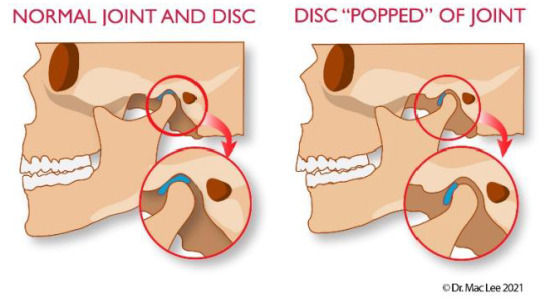
The Basics of TMJ/TMD
TMJ/TMD can be caused by various factors, including jaw injury, arthritis, or excessive teeth grinding. The temporomandibular joint acts like a sliding hinge, connecting your jawbone to your skull. When this joint and its surrounding muscles experience problems, it can lead to pain and difficulty in jaw movement.
The Emotional Toll
Living with TMJ/TMD can take a toll on your emotional health. Let's delve into some of the ways this condition can impact you emotionally.
A. Chronic Pain and Stress:
One of the primary emotional consequences of TMJ/TMD is chronic pain. The constant discomfort can lead to stress and anxiety, affecting your overall mood. As you navigate daily life with persistent jaw pain, it's common to experience heightened stress levels, which can contribute to a cycle of emotional distress.
B. Impact on Mental Health:
The emotional impact of TMJ/TMD goes beyond physical pain. Individuals with this condition may find themselves dealing with mental health challenges such as depression and frustration. The limitations imposed by TMJ/TMD can affect daily activities, leading to a sense of helplessness and emotional exhaustion.
Social Challenges
TMJ/TMD can also influence your social life, as the emotional toll may affect your ability to engage in various activities and maintain relationships.
A. Communication Difficulties:
Individuals with TMJ/TMD may experience difficulties in communication, especially if talking or even smiling induces pain. This can lead to social isolation as affected individuals may avoid social situations to minimize discomfort.
B. Impact on Relationships:
The emotional strain of TMJ/TMD can extend to personal relationships. Partners, family members, and friends may struggle to understand the challenges faced by those with TMJ/TMD, leading to strained relationships. Effective communication about the condition and its emotional impact is crucial for maintaining healthy connections.
Coping Strategies
Managing the emotional impact of TMJ/TMD is essential for overall well-being. Here are some simple coping strategies that can help:
A. Seek Professional Help
Consulting with a healthcare professional, such as a dentist or a specialist in TMJ disorders, can provide valuable insights and treatment options. They can help manage the physical symptoms of TMJ TMD, which in turn may alleviate emotional distress.
B. Stress Management Techniques
Since stress is a significant contributor to the emotional impact of TMJ/TMD, incorporating stress management techniques into your daily routine can be beneficial. This may include activities such as meditation, deep breathing exercises, or yoga.
C. Support Groups
Connecting with others who share similar experiences can provide emotional support. Online or in-person support groups for TMJ/TMD can offer a platform to share feelings, coping strategies, and advice.
D. Communication
Openly communicating with friends and family about your condition is crucial. Educate them about TMJ/TMD, helping them understand the challenges you face. This transparency can strengthen relationships and provide you with the support needed during challenging times.
Join ICCMO Today

Living with TMJ/TMD goes beyond the physical discomfort; it takes a toll on your emotional well-being and social life. Understanding the emotional impact of this condition is the first step toward effective coping. At ICCMO, we teach dentists about TMJ/TMD and their treatment. Even if you are a patient, you can visit our website to find the best dentist who can help you with the right guidance. If you are a dentist, become a member at ICCMO and see how it makes a big difference in your medical career. Remember, you're not alone, and with the right support, you can manage both the physical and emotional aspects of TMJ/TMD.
#causes of tmj tmd#causes of tmd#tmj dysfunction causes#tmd causes#temporomandibular joint dysfunction causes
1 note
·
View note
Text
34th Annual Bernard Jankelson Memorial Lecture

Mark your calendars for ICCMO’s 34th Annual Bernard Jankelson Memorial Lecture, taking place in vibrant Denver, CO on September 19-21, 2024.
This highly anticipated event promises to be a landmark in dental education, bringing together leading experts in an immersive and captivating experience. Get ready to be inspired, educated, and connected as we delve into the latest advancements in craniomandibular orthopedics and overall health.
Stay tuned for more exciting details coming soon! Don't miss this opportunity to join the forefront of the industry and elevate your dental practice to new heights. Save the date!
0 notes
Text
Navigating the Path to Relief: What Unfolds After a TMJ Diagnosis
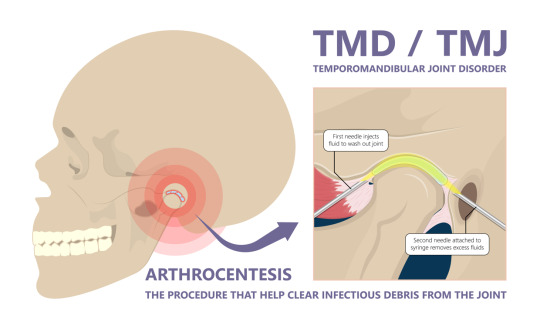
Introduction: Understanding the Journey
So, you've recently been handed a diagnosis – a term to put to the discomfort and challenges you've been experiencing with your jaw. But what happens next? How do you move forward on this winding road toward relief? Let's delve into the post-diagnosis terrain of Temporomandibular Joint (TMJ) disorders and explore the steps, considerations, and potential avenues for finding solace and comfort.
The Discovery Phase: Understanding Your TMJ Diagnosis
The journey to relief kicks off with understanding your TMJ diagnosis. It's more than just a label; it's a roadmap to navigate the challenges ahead. Imagine it as deciphering a unique language – the language of your body. Your healthcare provider, armed with various diagnostic tools, decodes the symptoms, examines the jaw's physical state, and pieces together the puzzle of your TMJ condition.
Unveiling the Complexity of TMJ Symptoms
TMJ disorders are not a one-size-fits-all ordeal. Jaw pain, clicking sounds, headaches – these symptoms paint a unique picture for each individual. Understanding this complexity empowers you to communicate effectively with your healthcare team. After all, they are your allies in this journey.
Charting Your Course: The Diverse Treatment Landscape
With a diagnosis in hand, you're now standing at the crossroads of treatment options. The landscape is diverse, ranging from simple lifestyle adjustments to more intricate interventions. It's a personalized journey, and the right path depends on the nature and severity of your TMJ condition.
Small Changes, Big Impact: Lifestyle Adjustments
Believe it or not, relief often begins with small, impactful lifestyle adjustments. Your diet, stress management techniques, and daily habits can play a pivotal role in alleviating symptoms and contributing to your overall well-being.
The Healing Touch of Physical Therapy
Physical therapy steps into the spotlight, offering exercises and stretches to strengthen jaw muscles, improve joint function, and ease the pain. Working hand in hand with a skilled physical therapist becomes a cornerstone of your treatment plan.
Orthodontics and Surgery: Exploring Advanced Interventions
For some, the journey might involve more advanced interventions like orthodontic adjustments or surgical procedures. These options aim to address structural issues within the jaw joint, providing lasting relief. However, understanding the nuances and discussing the benefits and risks is crucial before taking this route.
The Collaborative Journey: Patient and Provider
Relief is not a solo venture. It's a collaborative effort that hinges on open communication and trust between you and your healthcare team. Regular check-ins, discussions about progress, and adjustments to your treatment plan ensure that the road to relief is dynamic and responsive to your evolving needs.
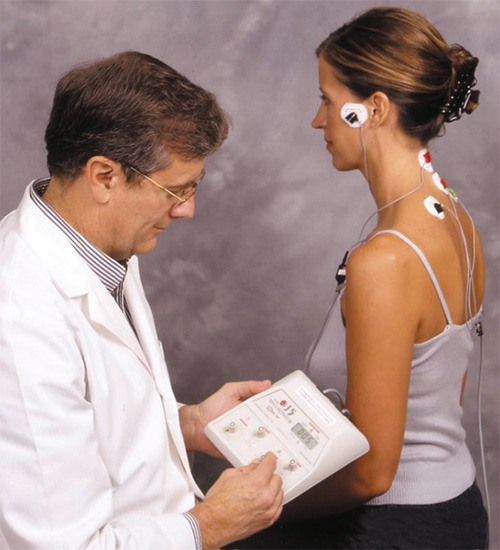
Conclusion: Your Personal Path to TMJ Relief
In the aftermath of a TMJ diagnosis, the road to relief is anything but predictable. It's a journey that unfolds uniquely for each individual – a journey of understanding, exploration, and collaboration. As you navigate this path, remember, relief is not just a destination; it's a continuous process of discovery and adaptation tailored to your unique needs. So, step forward with confidence, for the road ahead is as unique as you are.
#how is tmj tmd diagnosed#how is tmj diagnosed#how to treat tmj disorders#how do you diagnose tmj#how to diagnose tmj
0 notes
Text
Understanding The Process Of TMJ/TMD Diagnosis
TMJ or TMD affects the jaw and its surrounding structures and it can lead to a variety of symptoms, including jaw pain, headaches, and difficulty chewing. Diagnosing TMJ/TMD is a crucial first step in managing the condition and finding relief. In this blog, we'll delve into the diagnostic process, shedding light on how healthcare professionals identify and assess TMJ/TMD.

Clinical Examination
The journey to a TMJ/TMD diagnosis usually begins with a visit to a healthcare professional, often a dentist, oral and maxillofacial surgeon, or an orofacial pain specialist. They will begin with a thorough clinical examination, which includes checking for common symptoms like jaw pain, clicking or popping sounds when opening or closing the mouth, and limited jaw movement. The healthcare provider may also assess the alignment of your bite and the condition of your teeth to rule out any dental-related issues that could be contributing to the problem.
Medical History
During the initial consultation, you'll be asked about your medical history. It's important to provide a comprehensive overview of your symptoms, their duration, and any factors that might exacerbate or alleviate the pain. This information can be instrumental in pinpointing the cause of your TMJ/TMD.
Imaging
In some cases, imaging may be necessary to confirm a TMJ/TMD diagnosis. Common imaging techniques include X-rays, CT scans, and MRI scans. X-rays are often used to rule out dental issues, while CT scans and MRI scans provide detailed views of the TMJ and surrounding structures. These imaging methods can reveal any structural abnormalities, such as joint damage or disk displacement.
Diagnostic Tests
Certain diagnostic tests, like electromyography (EMG), can be helpful in assessing the activity of the jaw muscles. EMG records the electrical activity in your jaw muscles, providing insights into muscle function and potential sources of pain.
Bite Analysis
Another crucial aspect of the diagnosis is a bite analysis. The dentist or specialist may assess your bite to determine if it's misaligned or if there are any issues with your teeth that might be contributing to your TMJ/TMD symptoms. Orthodontic treatment or bite adjustments may be recommended in some cases.
Differential Diagnosis
It's essential to remember that TMJ/TMD symptoms can overlap with other conditions, including dental problems, sinus issues, and tension headaches. A thorough differential diagnosis is vital to rule out other potential causes of your discomfort.
Collaborative Care
The diagnosis of TMJ/TMD often involves a multidisciplinary approach. Your healthcare provider may collaborate with other specialists, such as physical therapists, to develop a comprehensive treatment plan tailored to your unique needs.
A precise diagnosis is essential to guide the appropriate treatment approach, which may include conservative therapies, lifestyle modifications, or, in some cases, surgical interventions. If you suspect you have TMJ/TMD, seeking the expertise of a qualified healthcare professional is the first step towards finding relief and improving your quality of life.
0 notes
